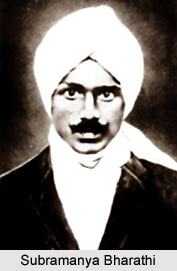 The term `puthuk kavithai` (new poetry) was first applied to the works of a particular group of "new poets" who appeared approximately after 1958-59. Their works were collected by C.S. Chellappa, who was himself one of the new poets, in October 1962 in a slim, groundbreaking volume called Puthuk Kuralkal (New Voices). Besides five poems by the "revolutionary" Pichamurthi and Rajagopalan, the book featured 58 other poems by 22 younger poets (the poems were all written between 1959 and 1962) as well as a very important introduction by Chellappa.
The term `puthuk kavithai` (new poetry) was first applied to the works of a particular group of "new poets" who appeared approximately after 1958-59. Their works were collected by C.S. Chellappa, who was himself one of the new poets, in October 1962 in a slim, groundbreaking volume called Puthuk Kuralkal (New Voices). Besides five poems by the "revolutionary" Pichamurthi and Rajagopalan, the book featured 58 other poems by 22 younger poets (the poems were all written between 1959 and 1962) as well as a very important introduction by Chellappa.
The new poets are markedly different from other "modern poets," who, despite their fervent support of new political ideologies and use of contemporary idioms, stuck to the traditional forms of composition in poetry. They continued to compose poems in orthodox meters and traditional rhythms. There are certain distinctive features seen in the works of the new poets which sets them apart from the other modern poets. Their poems are, historically speaking, in the `revolutionary` groundbreaking manner and style of the four outstanding poets Subrahmanya Bharathi, Puthumai Piththan, K. P. Rajagopalan, and Pichamurthi. Though they do not in any way deny the richness of the cultural heritage of the Tamils, the poems at the same time signify a radical break with the past history and ancient traditions of Tamil Nadu. Where the forms and style of the poetry is concerned, they break free from traditional forms and prosodic structures and delight in innovation. They experimented in language and forms in a way which showed that they were familiar with the modern trends in French, English, and American poetry. Most importantly, the focus of the matter of the poetry now shifted to contemporary matters and went on to include issues which had so long been ignored.
There is a definite break with tradition in the new poetry on two levels. From the bardic poetry of the classical age to the lyrics of Bharathi, literature and music have been closely associated, so that Tamil poems have most often been sung with a great deal of emotion, with bhakti (love of God) predominating; in dramatic contrast, the new poems strive consciously after a unity of meaning (pond) and form (urn) in their sincere attempts to map out the contemporary scene of Tamil Nadu.
While the prose poems and vers libre of Bharathi and Puthumai Piththan ushered in the new poetry, the decisive turning points in the development of the genre came with Pichamurthi`s poem "Kattu Vaththu" (Wild Duck) in 1959 and the publication of Chellappa`s anthology in 1962. The young poets featured in Chellappa`s anthology wanted to separate themselves from the worn-out words, well-worn themes, and all-too-familiar forms of traditional poetry. By avoiding the elaborate diction and unrestrained imagery of medieval poetry, the new poets were essentially carrying out a "revolt". They expressed an almost obsessive concern with everyday realities in such forceful language that it was in stark contrast to the brief and terse language style of early classical poetry. Indeed, in the writings of the new poets, a clash between `tradition` and `modernity` takes place in contemporary Tamil literature. However, it may be mentioned here that even in the most revolutionary and outstanding works of the new poets the basic characteristics of traditional poetry can be discerned. This reflects the intimate connection between the new language and the fundamental rhythms of Tamil language and speech.
Thus it is evident from the ongoing discussion that the new poets broke all traditional metrical rules, experimented with free verse, and wrote uninhibitedly about unconventional and even forbidden subjects in an effort to create a fresh and truly modern Tamil idiom in their poetry. Initially, they were shunned by traditionalists and ignored by many Tamil academics. There was also hardly any response from ordinary readers. Today, however, innumerable young poets are exercising their considerable skills in this fresh mode, and almost a hundred New Wave poetic collections are published every year.



















